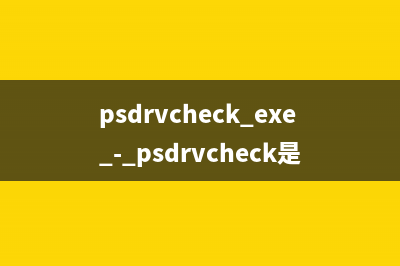用SQL语句添加删除修改字段 1.增加字段 alter table docdsp add dspcode char() 2.删除字段 ALTER TABLE table_NAME DROP COLUMN column_NAME 3.修改字段类型 ALTER TABLE table_name ALTER COLUMN column_name new_data_type 4.sp_rename 改名 更改当前数据库中用户创建对象(如表、列或用户定义数据类型)的名称。 语法 sp_rename [ @objname = ] 'object_name' , [ @newname = ] 'new_name' [ , [ @objtype = ] 'object_type' ] 如:EXEC sp_rename 'newname','PartStock' 5.sp_help 显示表的一些基本情况 sp_help 'object_name' 如:EXEC sp_help 'PartStock' 6.判断某一表PartStock中字段PartVelocity是否存在 if exists (select * from syscolumns where id=object_id('PartStock') and name='PartVelocity') print 'PartVelocity exists' else print 'PartVelocity not exists' 另法: 判断表的存在性: select count(*) from sysobjects where type='U' and name='你的表名' 判断字段的存在性: select count(*) from syscolumns where id = (select id from sysobjects where type='U' and name='你的表名') and name = '你要判断的字段名' 一个小例子 --假设要处理的表名为: tb --判断要添加列的表中是否有主键 if exists(select 1 from sysobjects where parent_obj=object_id('tb') and xtype='PK') begin print '表中已经有主键,列只能做为普通列添加' --添加int类型的列,默认值为0 alter table tb add 列名 int default 0 end else begin print '表中无主键,添加主键列' --添加int类型的列,默认值为0 alter table tb add 列名 int primary key default 0 end 7.随机读取若干条记录 Access语法:SELECT top * From 表名 ORDER BY Rnd(id) Sql server:select top n * from 表名 order by newid() mysql select * From 表名 Order By rand() Limit n 8.说明:日程安排提前五分钟提醒 SQL: select * from 日程安排 where datediff(minute,f开始时间,getdate())>5 9.前条记录 select top * form table1 where 范围 .包括所有在 TableA 中但不在 TableB和TableC 中的行并消除所有重复行而派生出一个结果表 (select a from tableA ) except (select a from tableB) except (select a from tableC) .说明:随机取出条数据 select top * from tablename order by newid() .列出数据库里所有的表名 select name from sysobjects where type=U .列出表里的所有的字段名 select name from syscolumns where id=object_id(TableName) .说明:列示type、vender、pcs字段,以type字段排列,case可以方便地实现多重选择,类似select 中的case。 select type,sum(case vender when A then pcs else 0 end),sum(case vender when C then pcs else 0 end),sum(case vender when B then pcs else 0 end) FROM tablename group by type .说明:初始化表table1 TRUNCATE TABLE table1 .说明:几个高级查询运算词 A: UNION 运算符 UNION 运算符通过组合其他两个结果表(例如 TABLE1 和 TABLE2)并消去表中任何重复行而派生出一个结果表。当 ALL 随 UNION 一起使用时(即 UNION ALL),不消除重复行。两种情况下,派生表的每一行不是来自 TABLE1 就是来自 TABLE2。 B: EXCEPT 运算符 EXCEPT 运算符通过包括所有在 TABLE1 中但不在 TABLE2 中的行并消除所有重复行而派生出一个结果表。当 ALL 随 EXCEPT 一起使用时 (EXCEPT ALL),不消除重复行。 C: INTERSECT 运算符 INTERSECT 运算符通过只包括 TABLE1 和 TABLE2 中都有的行并消除所有重复行而派生出一个结果表。当 ALL 随 INTERSECT 一起使用时 (INTERSECT ALL),不消除重复行。 注:使用运算词的几个查询结果行必须是一致的。 .说明:在线视图查询(表名1:a ) select * from (SELECT a,b,c FROM a) T where t.a > 1; .说明:between的用法,between限制查询数据范围时包括了边界值,not between不包括 select * from table1 where time between time1 and time2 select a,b,c, from table1 where a not between 数值1 and 数值2 .说明:in 的使用方法 select * from table1 where a [not] in (‘值1','值2','值4','值6') .说明:两张关联表,删除主表中已经在副表中没有的信息 delete from table1 where not exists ( select * from table2 where table1.field1=table2.field1 ) . 说明:复制表(只复制结构,源表名:a 新表名:b) (Access可用) 法一:select * into b from a where 1<>1 法二:select top 0 * into b from a .说明:拷贝表(拷贝数据,源表名:a 目标表名:b) (Access可用) insert into b(a, b, c) select d,e,f from b; .说明:跨数据库之间表的拷贝(具体数据使用绝对路径) (Access可用) insert into b(a, b, c) select d,e,f from b in ‘具体数据库' where 条件 例子:..from b in "&Server.MapPath(".")&"data.mdb" &" where.. .创建数据库 CREATE DATABASE database-name .说明:删除数据库 drop database dbname .说明:备份sql server --- 创建 备份数据的 device USE master EXEC sp_addumpdevice disk, testBack, c:mssql7backupMyNwind_1.dat --- 开始 备份 BACKUP DATABASE pubs TO testBack .说明:创建新表 create table tabname(col1 type1 [not null] [primary key],col2 type2 [not null],..) 根据已有的表创建新表: A:create table tab_new like tab_old (使用旧表创建新表) B:create table tab_new as select col1,col2… from tab_old definition only .说明: 删除新表:drop table tabname .说明: 增加一个列:Alter table tabname add column col type 注:列增加后将不能删除。DB2中列加上后数据类型也不能改变,唯一能改变的是增加varchar类型的长度。 .说明: 添加主键:Alter table tabname add primary key(col) 说明: 删除主键:Alter table tabname drop primary key(col) .说明: 创建索引:create [unique] index idxname on tabname(col….) 删除索引:drop index idxname 注:索引是不可更改的,想更改必须删除重新建。 .说明: 创建视图:create view viewname as select statement 删除视图:drop view viewname .说明:几个简单的基本的sql语句 选择:select * from table1 where 范围 插入:insert into table1(field1,field2) values(value1,value2) 删除:delete from table1 where 范围 更新:update table1 set field1=value1 where 范围 查找:select * from table1 where field1 like '%value1%' ---like的语法很精妙,查资料! 排序:select * from table1 order by field1,field2 [desc] 总数:select count * as totalcount from table1 求和:select sum(field1) as sumvalue from table1 平均:select avg(field1) as avgvalue from table1 最大:select max(field1) as maxvalue from table1 最小:select min(field1) as minvalue from table1 .数据库备份:
推荐整理分享用SQL语句添加删除修改字段、一些表与字段的基本操作、数据库备份等(用sql语句添加删除字段),希望有所帮助,仅作参考,欢迎阅读内容。

文章相关热门搜索词:数据库添加或删除一列 sql,用sql语句添加删除字符,sql增删语句,用sql语句添加删除记录,用sql语句添加删除字段,用sql语句添加删除字符,sql添加和删除列,用sql语句添加删除字段,内容如对您有帮助,希望把文章链接给更多的朋友!
SQLServer中的切割字符串SplitString函数 SETANSI_NULLSONGOSETQUOTED_IDENTIFIERONGO/*bykudychen-9-*/CREATEfunction[dbo].[SplitString](@Inputnvarchar(max),--inputstringtobeseparated@Separatornvarchar(max)=',',--astringthatdelimitthesubst
SQL中exists的使用方法 有一个查询如下:SELECTc.CustomerId,CompanyNameFROMCustomerscWHEREEXISTS(SELECTOrderIDFROMOrdersoWHEREo.CustomerID=cu.CustomerID)这里面的EXISTS是如何运作呢?子查询返回的是Orde
sqlserver 数据库学习笔记 1,exists和in的理解(参考




